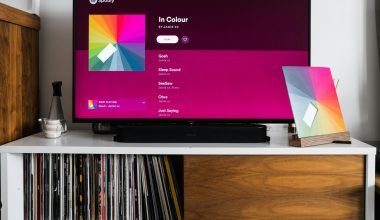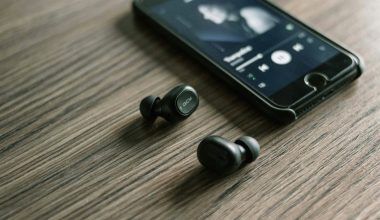As an independent artist, creating a video is just the beginning. To truly maximize your hard work, you must share your video on all streaming platforms. It’s the best way to reach a global audience, build your fan base, and establish yourself in a competitive industry. But where do you begin? This guide will walk you through the process step by step, ensuring you can confidently navigate the world of video distribution.
Understanding the Power of Video for Independent Artists
Video content has become one of the most powerful tools for artists to engage with their audience. Platforms like YouTube, Instagram, and TikTok thrive on video content, making it essential for you to create and distribute your work effectively. A well-shared video can amplify your message, showcase your creativity, and make your music more memorable.
When you share your video on all streaming platforms, you increase its accessibility. Every platform has a unique audience, and by covering them all, you ensure your video reaches as many people as possible. Additionally, streaming platforms help you monetize your work, gain recognition, and boost your chances of going viral.
Setting Up for Success: What You Need Before Sharing
Before you start sharing your video, ensure it’s ready for distribution. Focus on these key aspects:
- High-Quality Content: Invest in good visuals and audio. A well-produced video reflects your professionalism.
- Optimized Format: Make sure your video meets the format requirements of different platforms.
- Captivating Thumbnail: Create an eye-catching thumbnail that grabs attention instantly.
- Metadata Matters: Write clear titles, descriptions, and include relevant keywords for SEO.
Choosing the Right Platforms
Not every streaming platform is the same, so it’s important to pick ones that align with your goals. Here are some popular platforms and how they can help:
- YouTube: Ideal for long-form content and reaching a global audience.
- Instagram and Facebook: Perfect for short clips and engaging visuals.
- TikTok: Great for short, viral content and connecting with younger audiences.
- Spotify and Apple Music: If your video includes music, these platforms can help you reach listeners.
- Vimeo: A platform for showcasing high-quality, professional content.
Uploading Your Video Step by Step
On YouTube
YouTube is a cornerstone for video sharing. Here’s how to make the most of it:
- Create a YouTube account and optimize your channel profile.
- Use relevant keywords in your video title and description.
- Add tags that reflect your content.
- Include a call-to-action (CTA) encouraging viewers to like, share, and subscribe.
On Instagram and Facebook
Social media platforms thrive on engagement. For Instagram and Facebook:
- Choose the right format, like reels or IGTV, for Instagram.
- Use hashtags to increase discoverability.
- Post at times when your audience is most active.
- Engage with comments and shares to boost visibility.
On TikTok
TikTok is all about creativity and trends. To share your video here:
- Keep your content short, engaging, and trend-relevant.
- Participate in challenges and use trending sounds.
- Collaborate with influencers for a broader reach.
The Importance of Cross-Promotion
Once your video is live, don’t stop there. Share it across all your social media accounts, email lists, and websites. Encourage your fans to share it, and collaborate with other artists to expand your reach. Cross-promotion ensures that your video gets maximum exposure.
Leveraging Analytics to Improve Performance
Most platforms offer analytics to track your video’s performance. Use these tools to understand what’s working and what isn’t. Pay attention to metrics like views, watch time, and engagement. Adjust your strategy based on these insights to continuously improve.
How to Monetize Your Video
As an independent artist, monetizing your video is essential for sustaining your career. Platforms like YouTube offer ad revenue opportunities, while TikTok and Instagram can help you land brand deals. Additionally, you can use your video to promote your music, merchandise, or live events.
Tools to Simplify the Process
Several tools can make sharing your video easier:
- Canva: For creating thumbnails and social media posts.
- Hootsuite or Buffer: For scheduling and managing posts across platforms.
- TubeBuddy: To optimize your YouTube uploads.
- Bitly: To create trackable links for cross-promotion.
Overcoming Common Challenges
It’s normal to face challenges as you share your video on all streaming platforms. These might include:
- Technical Glitches: Double-check your uploads and formats.
- Low Engagement: Experiment with different content styles and timings.
- Time Constraints: Use automation tools to save time.
Building a Consistent Brand
Consistency is key to building a loyal audience. Use the same logo, colors, and tone across all platforms to make your content easily recognizable. A strong brand identity will help viewers connect with you and your work.
Staying Inspired and Creative
Sharing your video on all streaming platforms is just one part of your journey. Keep creating, experimenting, and connecting with your audience. The more authentic and consistent you are, the more success you’ll find as an independent artist.
Conclusion
As an independent artist, sharing your video on all streaming platforms is essential for reaching your full potential. By following this guide, you can ensure your work gets the visibility it deserves while building a sustainable career. Start small, stay consistent, and never underestimate the power of your creativity. Now is the perfect time to take action—share your video today and watch your audience grow!
For further reading, explore these related articles:
- How to Share Your Album on Apple Music: Step-by-Step
- Share Your Album on Apple Music Easily: A Complete Guide
- How to Share Your Album on Apple Music Without a Distributor
For additional resources on music marketing and distribution, visit DMT RECORDS PRIVATE LIMITED.






